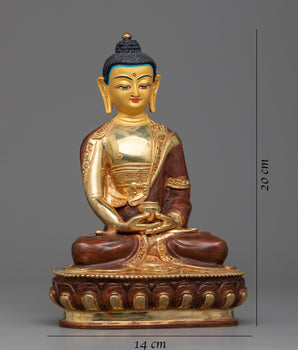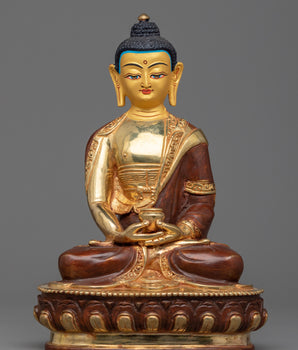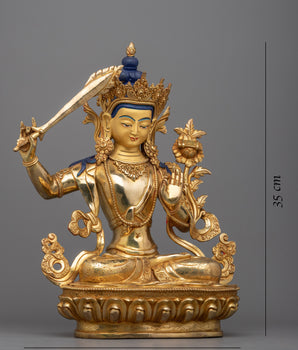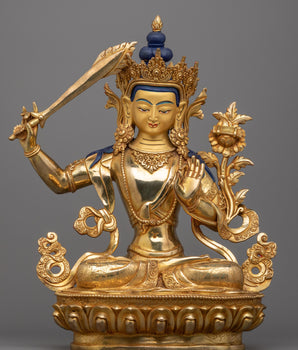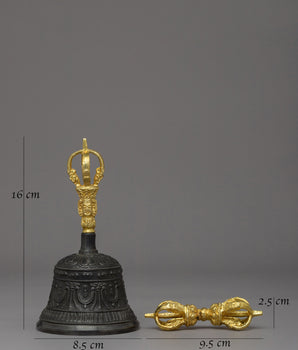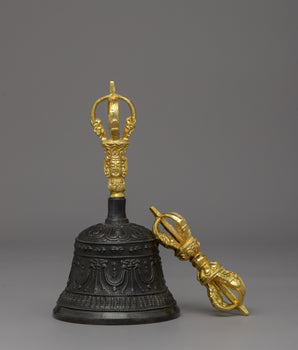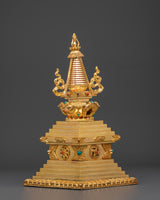
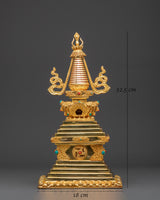
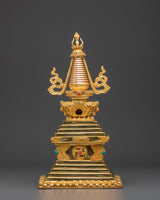
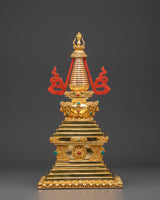
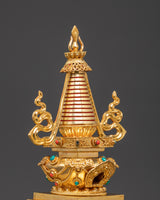
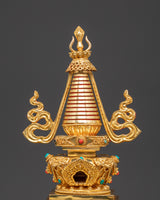
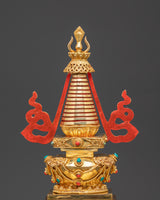
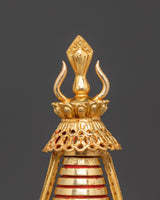
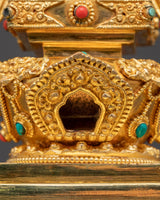
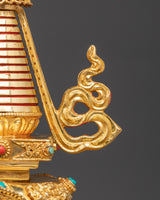
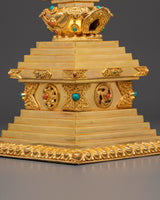
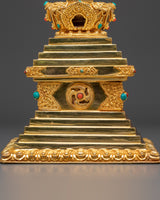
Gold Plated Buddhist Stupa for Rituals | Tibetan Copper Shrine
Copper Gold Plated Buddhist Stupa for Rituals | Turquoise and Coral Inlaid
--------------------------------------------------
Size: 32.5cm (Height) x 18cm (Width)
Weight: 1.70kg
Materials: Copper Body, Gold Plated, Artificial Stones: Turquoise, Coral
--------------------------------------------------
About Our Ritual Item :
This gold-plated Buddhist Stupa for Rituals is a sacred Tibetan artifact symbolizing enlightenment, peace, and spiritual awakening. Handcrafted with a copper body and finished in radiant gold plating, the stupa represents the enlightened mind of the Buddha. It is traditionally placed on altars and shrines as a focal point for meditation, prayer, and ritual offerings. Its presence is believed to bring blessings, harmony, and spiritual merit into one’s life.
Measuring 32.5cm in height and 18cm in width, and weighing 1.70kg, this stupa is adorned with turquoise and coral stones that enhance its beauty and sacred significance. In Buddhist culture, stupas embody the path to enlightenment, with each level symbolizing stages of spiritual practice. The brilliant gold plating represents purity and wisdom, while the turquoise and coral add protection, healing energy, and vitality. This stupa is ideal for practitioners, collectors, and those who wish to enrich their meditation space or altar with authentic Himalayan craftsmanship.
Bring home this Tibetan Copper Gold Plated Buddhist Stupa with Turquoise and Coral to elevate your spiritual practice. Whether used in daily rituals, as a meditation aid, or as meaningful decor, it carries deep symbolic value and beauty, making it a powerful Buddhist treasure for your sacred space.
Introduction To Stupa :
Before Buddhism, great teachers were buried in mounds. Some were cremated, but sometimes they were buried in a seated, meditative position. The mound of earth covered them up. Thus, the domed shape of the stupa came to represent a person seated in meditation, much as the Buddha was when he achieved Enlightenment and knowledge of the Four Noble Truths. The base of the stupa represents his crossed legs as he sat in a meditative pose. The middle portion is the Buddha’s body, and the top of the mound, where a pole rises from the apex surrounded by a small fence, represents his head. Before images of the human Buddha were created, reliefs often depicted practitioners demonstrating devotion to a stupa.
How to set up your own Buddhist Shrine?
• Find a clean, quiet, and uncluttered spot
• Set up an altar table, and cover it with an altar cloth that calls to you
• Place your sacred item at the center
• If you want a more elaborate altar, you can put a Stupa as well.
















